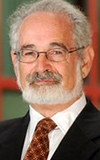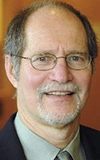
Image by PublicDomainPictures
In a major scientific review of research on e-cigarettes, UC San Francisco scientists found that industry claims about the devices are unsupported by the evidence to date, including claims that e-cigarettes help smokers quit.
The review marks the first comprehensive assessment of peer-reviewed published research into the relatively new phenomenon of electronic cigarettes.
The devices, which are rapidly gaining a foothold in popular culture particularly among youth, are marketed as a healthier alternative to tobacco smoking, as an effective tool to stop smoking, and as a way to circumvent smoke-free laws by allowing users to "smoke anywhere." Often the ads stress that e-cigarettes produce only "harmless water vapor."
But in their analysis of the marketing, health and behavioral effects of the products, which are unregulated, the UCSF scientists found that e-cigarette use is associated with significantly lower odds of quitting cigarettes. They also found that while the data are still limited, e-cigarette emissions "are not merely 'harmless water vapor,' as is frequently claimed, and can be a source of indoor air pollution.
The long-term biological effects of use are still unknown, the authors said.

Stanton Glantz, PhD

Neil Benowitz, MD

Rachel Grana, PhD, MPH
In tackling the question of whether e-cigarette use is helping or harming the nation's tobacco control efforts, the authors analyzed 84 research studies on e-cigarettes and other related scientific materials.
They concluded that e-cigarettes should be prohibited wherever tobacco cigarettes are prohibited and should be subject to the same marketing restrictions as conventional cigarettes.
The paper is published May 12, 2014 in the American Heart Association's journal Circulation.
E-cigarettes deliver a nicotine-containing aerosol popularly called "vapor" to users by heating a solution commonly consisting of glycerin, nicotine and flavoring agents. E-liquids are flavored, including tobacco, menthol, coffee, candy, fruit and alcohol flavorings.
Despite many unanswered questions about e-cigarette safety, the impact on public health, and whether the products are effective at reducing tobacco smoking, e-cigarettes have swiftly penetrated the marketplace in the United States and abroad in both awareness and use. Sold by the major multinational tobacco and other companies, the devices are aggressively marketed in print, television and the Internet with messages similar to cigarette marketing in the 1950s and 1960s, even in the U.S. and other countries that have long banned advertising for cigarettes and other tobacco products.
In one indication of the swiftness by which the devices have been embraced, in the U.S. youth "ever use" of the devices rose from 3.3 percent in 2011 to 6.8 percent the following year; in Korea, youth "ever use" of e-cigarettes rose from .5 percent in 2008 to 9.4 percent in 2011. "Ever use" means whether one has smoked the product even just once.
Furthermore, most adults and youths who use e-cigarettes are engaging in "dual use" – smoking both e-cigarettes and conventional cigarettes.
While most youth using e-cigarettes are dual users, up to a third of adolescent e-cigarette users have never smoked a conventional cigarette, indicating that some youth are starting use of the addictive drug nicotine with e-cigarettes.
The report also tackles secondhand exposure.
"E-cigarettes do not burn or smolder the way conventional cigarettes do, so they do not emit side-stream smoke; however, bystanders are exposed to aerosol exhaled by the user," said the authors. Toxins and nicotine have been measured in that aerosol, such as formaldehyde, acetaldehyde, acetic acid and other toxins emitted into the air, though at lower levels compared to conventional cigarette emissions.